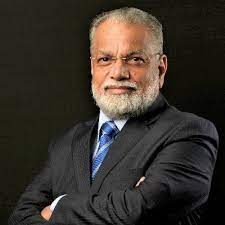IIM Bangalore taught me institution-building: Former ISRO chief K. Radhakrishnan
Students at the premier institute learn how to look at any situation in a systematic manner and with a long-time horizon

I joined the first batch of the Indian Institute of Management-Bangalore (IIM-B) that was founded in 1973. As a young avionics engineer with the Indian Space Research Organisation (ISRO), I was then working at the Vikram Sarabhai Space Centre (VSSC) in Thumba. I was eager to pursue higher studies in management, and IIM-B, naturally, came into my radar. Its USP at that time was the resolve to create a professional management cadre for the Indian public sector, and that meant instilling a society/ service-centric value system, besides the skill sets for a typical business executive.
A doyen of management education, Professor N.S. Ramaswamy, was our founding director. Within a year, he brought together 50 brilliant faculty members from India and abroad, and elegantly set up a temporary campus in and around a heritage building at Bengaluru’s Langford Garden. We, the first batch of 55 engineers, mostly with working experience varying from two to five years, were enrolled by September 1974.
At VSSC, I was used to a tenacious routine of long deliberations and stringent schedules—I would often report at 6 am and return at 10.30 pm. At IIM-B, the academic pressure went far beyond that. By the end of the second term, we had proved that we could remain alert even after 18-19 hours of lectures, group discussions, seminars, projects, take-home assignments and fortnightly tests. This premier batch has had an excellent track record—four of us have received the “distinguished alumni award” from IIM-B, including Arun Balakrishnan (former CMD of Hindustan Petroleum Corporation Ltd), M.S. Zaheed (former CMD of HMT Ltd), and Abhishek Mukherjee (former CEO of Compaq India and founder of Magnasoft).
IIMB fast-tracked our evolution as managers and leaders. Besides gathering distilled knowledge of management principles, techniques and skills, our perspectives and vision blossomed. And we learnt ‘how to learn’ about enterprises and environment, and how to look at any situation in a systemic and holistic manner with a long-time horizon. To me, that was the primary takeaway. This confluence of technology and management helped me shoulder decisive roles and responsibilities at ISRO from a manager to director to chairman, signing off with the Mangalyaan mission.
A specific gain from life at IIM-B were the lessons in institution-building. The new campus was in the conceptual stage. So, we also learnt about how to start an institution, seeing it happening there before us. Such lessons are not taught in books or classrooms. Let me elaborate: in 2000, I moved out of ISRO for a while to set up the Indian National Centre for Ocean Information Services (INCOIS) in Hyderabad. At INCOIS, we were starting from scratch—it was a new domain for me, with a new set of people and a new environment. I had just completed my PhD from IIT Kharagpur and went to the interview with a strategic plan.
Within a couple of months, I could redefine the institution’s vision and get the board to accept it. Originally planned as a data centre for the ocean, the institution was transformed into an information technology and knowledge enterprise. We shifted to a temporary location in Jubilee Hills while our new campus was being built. We wanted it to be a lean organisation with less than 100 people at any point of time. The IT boom was beginning and so I thought we must have a new culture in this new organisation. In two years, we became an internationally accepted institution and INCOIS became a key centre for the Indian Ocean region. In December 2004, the tsunami happened, and we rose up to become the tsunami-warning centre for India.
Source: India Today


